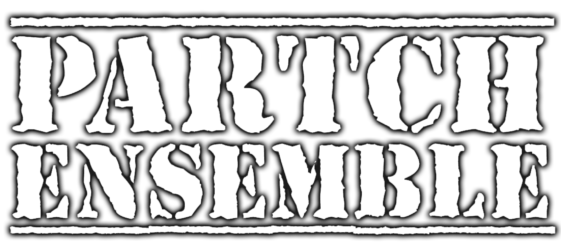Notes
1. Samba—A DECENT AND HONORABLE MISTAKE
2. Heartbeat Rhythm—RHYTHM OF THE WOMB–MELODY OF THE GRAVE
3. Afro-Chinese Minuet—HAPPY BIRTHDAY TO YOU!
We begin this evening’s concert with the Three Dances that begin the third section of Partch’s Plectra & Percussion Dances (1952). The composer warned, “It’s an amazing fact that the world of dance music, and of Latin American dance music particularly, has produced an army of purists that is equal of anything that serious classical music can offer. I say this in order to advise you that the first scene, for example, “A Decent and Honorable Mistake,” may not be recognizable to you as a samba. The second scene, “Rhythm of the Womb, Melody of the Grave,” is based on a rhythmically contrapuntal heartbeat. The third scene, “Happy Birthday to You!” begins with an African-sounding marimba and somehow gets involved with a Chinese- sounding guitar in a pentatonic melody, and so I call it an Afro-Chinese Minuet.” This last dance ends with these directions: “Slowly enough that canon TRIADS are distinct,” after which they are to be played “faster than the previous runs so that the triads are NOT distinct.” The harmonies of each of those descending triads are wildly divergent, as if the composer is pausing to reminisce about various years past, but finally admits that as a 51-year old they are, in fact, a blur.
Adapted Guitar III, Adapted Viola, Bass Marimba, Chromelodeon, Cloud Chamber Bowls, Diamond Marimba, Harmonic Canon, Kithara, Marimba Eroica
Percussion

